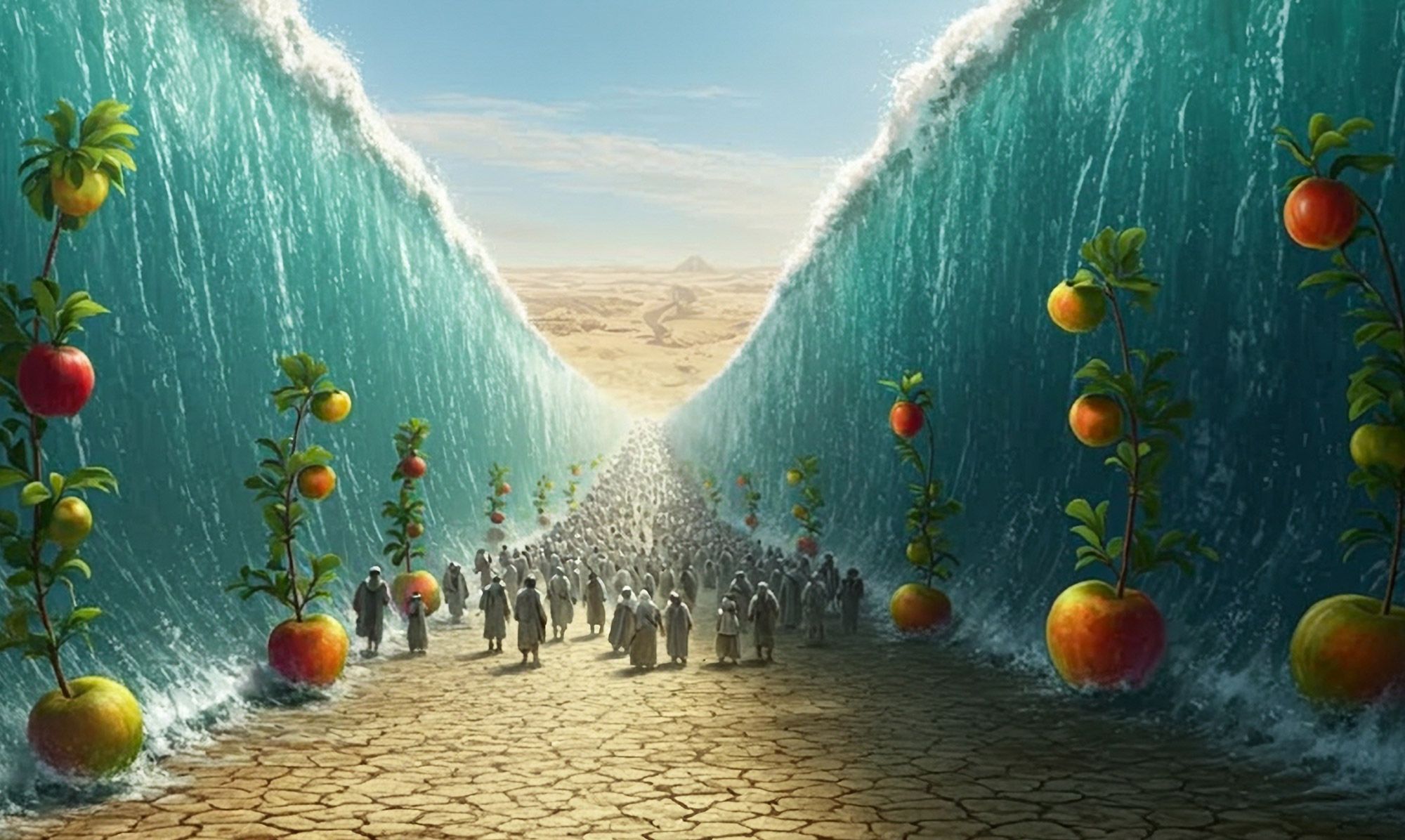In this week’s Torah Portion, Parshat Chukat, Moshe is taught the intricate laws of the Parah Adumah, red heifer, whose ashes purify a person who has become impure by contact with a corpse. After forty years of journeying through the desert, the Jewish People arrive in Zin and Miriam dies. Because the well that provided the people with water was in Miriam’s merit, the people are now thirsty. Hashem tells Moshe to speak to a specific rock and command it to give water. Moshe and Aharon gather the people but, as we understand from Rashi, that particular rock couldn’t be seen. Moshe gets water from a rock by hitting it, rather than speaking to it. Hashem decrees that because they hit the rock rather than speaking to it, they will not enter the Land of Israel.
The people begin traveling again and Moshe sends messengers to the King of Edom requesting permission to pass through his land (which is south of Canaan) on the way to Israel. Edom refuses this request which requires the Jewish People to travel farther to approach Israel from the east. When the camp arrives at Har Hor, Hashem tells Moshe to bring Aharon and his son Elazar up onto the mountain. He transfers the position of Kohen Gadol to Elazar by giving him the special garments worn only by the High Preist, which also allows Aharon to see his son as Kohen Gadol before his death. Aharon dies on the mountain and the nation mourns his death for 30 days. When the nation of Amalek, disguised as Canaanim, attack the Jews, the Jewish People pray to Hashem who hears their cries and they are victorious in battle. Upon traveling again, the people complain Jews complain about their food. Hashem sends snakes into the camp which kill many Jews. Hashem hears Moshe’s prayers on their behalf and Moshe builds a copper snake and puts it on a poll as Hashem instructs. This “Nachash Nechoshet” heals all who look at it. Today’s emergency medical staff usually have the symbol of this healing Nachas Nechoshet on their uniforms and ambulances. The People continue traveling and sing a song in praise of Hashem and the miraculous well which provided them water in the desert.
When the Jewish People continue their journey toward Israel, they arrive at the Land of the Emori and ask if they can pass through. Sichon, the king of Emor, attacks the Jewish People rather than allow them passage. The Jews are victorious and the same thing happens in Bashan. After occupying Emor and Bashan, the people arrive at the bank of the Jordan River across from the city of Yericho.
There are many symbols in this week’s Parsha. Red jelly beans or candies can symbolize the Red Heifer that had to be entirely red in order to be used. Gummy bones can represent becoming ritually impure by coming in contact with a corpse (therefore needing the ashes of the Parah Adumah). Some children may notice that there are not fully red – which would invalidate them if they were red heifers. Atomic Fireballs or Red Hots (also red) can also represent the burning of the Red Heifer so that its ashes could be used for its service. Candy feet (or Fruit by the Foot) could represent the many times the Jewish People traveled in this week’s Parsha. Blue Sour belts or jelly beans can symbolize the water that was in the well of Miriam that dried up after her death, as well as the water that flowed from the rock. Rock candy or Boulder Bites can represent the rock that Moshe hit. Cry Baby tears can symbolize the many times the Jewish People complain in this week’s Parsha as well as the mourning after Aharon’s death. Candy dots can represent the stones on the breastplate of the Kohel Gadol, one of the garments transferred to Elazar by his father Aharon on Har Hor. Gummy snakes can symbolize the snakes that were sent as a plague and then the Nachash HaNechoshet that healed them. Do you have other ideas for symbolic Parsha treats? Please share them in the comments section below.
Shabbat Shalom,
Shayna Levine-Hefetz


